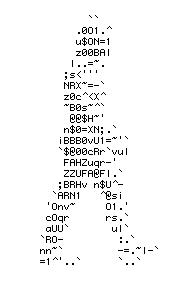NewsMashing wird das Bloggen für immer verändern
Lesernswerter Artikel von Baul Boutin im Slate:
Why is newsmashing better than today's blogging techniques? Currently, political bloggers write a post by taking a snippet from a news story, an op-ed column, or another blog post. Then, they copy, paste, and indent the most partisan, disingenuous, and inaccurate passage onto their own blog and add a bulletproof rebuttal right below. The problem with this technique is that it makes the readers do all the work. First, they need to pop the original piece open in another window to "read the whole thing." After that, they have to flip back and forth between the original and the rebuttal to make sure the blogger isn't getting the facts wrong, leaving out a key detail, or quoting something out of context. Wouldn't it be a whole lot easier to read blogs if you could look at the critique and the original argument at the same time? (Quelle: Newsmashing - The new technique that will change blogging forever by Paul Boutin /Slate )
Und auf die Theorie folgt sogleich auch die Praxis auf Boutins Weblog. Vorgestellt wird das Projekt Webbed Footnotes von Scott Golder vom MIT Media Lab. Scott sucht Freiwillige für einen Testlauf:
I'm actually seeking participants for a user trial I just started, where users read and mark up New York Times articles. Mehr dazu hier: Newsmashing for real - volunteers wanted
Besonders bemerkenswert allerdings der Abschnitt, der vom Slate-Redaktor gestrichen wurde, in Paul Boutins Blog jedoch, erhalten blieb:
As mashes get newsmashed, and more newsmashers newsmash those mashes in turn, the end result will be a convergence of visually mashed-up news that encapsulates all human knowledge, asymptotically approaches truth, and seamlessly morphs into a book deal and keynote speaker gigs for yours truly.
Why is newsmashing better than today's blogging techniques? Currently, political bloggers write a post by taking a snippet from a news story, an op-ed column, or another blog post. Then, they copy, paste, and indent the most partisan, disingenuous, and inaccurate passage onto their own blog and add a bulletproof rebuttal right below. The problem with this technique is that it makes the readers do all the work. First, they need to pop the original piece open in another window to "read the whole thing." After that, they have to flip back and forth between the original and the rebuttal to make sure the blogger isn't getting the facts wrong, leaving out a key detail, or quoting something out of context. Wouldn't it be a whole lot easier to read blogs if you could look at the critique and the original argument at the same time? (Quelle: Newsmashing - The new technique that will change blogging forever by Paul Boutin /Slate )
Und auf die Theorie folgt sogleich auch die Praxis auf Boutins Weblog. Vorgestellt wird das Projekt Webbed Footnotes von Scott Golder vom MIT Media Lab. Scott sucht Freiwillige für einen Testlauf:
I'm actually seeking participants for a user trial I just started, where users read and mark up New York Times articles. Mehr dazu hier: Newsmashing for real - volunteers wanted
Besonders bemerkenswert allerdings der Abschnitt, der vom Slate-Redaktor gestrichen wurde, in Paul Boutins Blog jedoch, erhalten blieb:
As mashes get newsmashed, and more newsmashers newsmash those mashes in turn, the end result will be a convergence of visually mashed-up news that encapsulates all human knowledge, asymptotically approaches truth, and seamlessly morphs into a book deal and keynote speaker gigs for yours truly.
Cyberwriter - 17. Mär, 08:50 - Blogging




















